Is Aquamation ash safe to handle?

Aquamation is a method of final disposition that is available for both our human and pet loved ones. The scientific name for this water-based process is alkaline hydrolysis. It is the same process that occurs as part of nature’s course when a body is laid to rest in the soil. A combination of gentle water flow, temperature, and alkalinity are used to accelerate the breakdown of organic materials.
Aquamation for Pets is approved everywhere in the United States and Canada. Aquamation for Humans is approved in 21 states 4 provinces, as well as other parts of the world.
The Aquamation process is performed after any viewing or visitation services the family wishes to have. When it’s time for the process, the individual body is respectfully placed in a stainless steel vessel. Alkali is added to the process based on individual characteristics (weight, sex, embalming status), and the vessel fills with water. The solution of 95% water and 5% alkali is heated to 200-300°F, and gently circulated for the entire length of the process.
At the end of the process, all material is broken down to the smallest building blocks; there is no DNA or RNA remaining. The sterile process water is released for recycling (our bodies are approximately 65% water to begin with), and the vessel performs a fresh water rinse for the equipment and remains. When the operator opens the door, only the inorganic bone minerals remain. These minerals are processed into powder and returned to the family in an urn. This final processing step is the same process that is followed with flame cremation. Many families hold a celebration of life or gathering when the loved one’s remains are returned to the family’s care.
The flame cremation process occurs at 1600-1800°F with the remains in contact with direct flame. Some of the inorganic mineral remains are lost to the air through the stack. The Aquamation process occurs at 200-300°F without any fire at all, and the water circulation in the system is a similar flow to that of a creek or stream. It is very gentle to the final mineral remains, which allows more ash to be present at the end of the process.
The ash remains are 100% safe to handle. Alkaline hydrolysis is a proven sterilization process that results in pathogen and disease free remains.
As with anything, toxicity of a substance is a function of concentration. Miracle grow is a fertilizer, but if over-applied, it can kill a plant. A daily multivitamin is not toxic when taken as directed, but it would be toxic (and likely deadly) if the whole bottle were to be taken. When spreading or scattering ashes, we need to pay mind to where we are scattering them. A cremation garden that allows the scattering of ashes from hundreds of individuals can be a tough environment for growing plants. In extreme cases, poor practices could result in contamination of the water table. For families wanting to use the ashes from Aquamation or flame cremation as part of a potting soil, allowing their loved one to live on through the plant, the ashes are certainly not toxic if the soil is properly prepared. Significantly diluting the calcium phosphate ashes with potting soil and a pH balancer to match your region and specific plant type makes the ashes beneficial to the plant instead of potentially toxic. Your Aquamation provider can provide you with guidance for creating your living memorial.
Please check local regulations to make sure the scattering location is okay prior to scattering, and speak with your funeral professional about the best way to scatter the ashes so your experience can be as meaningful as possible. Funeral professionals have great tips for making the scattering experience go as expected. Some special care must be taken when spreading the ashes in wind or water, as the ash is quite fine. Your Aquamation provider will provide you with guidance.
– Mitch




